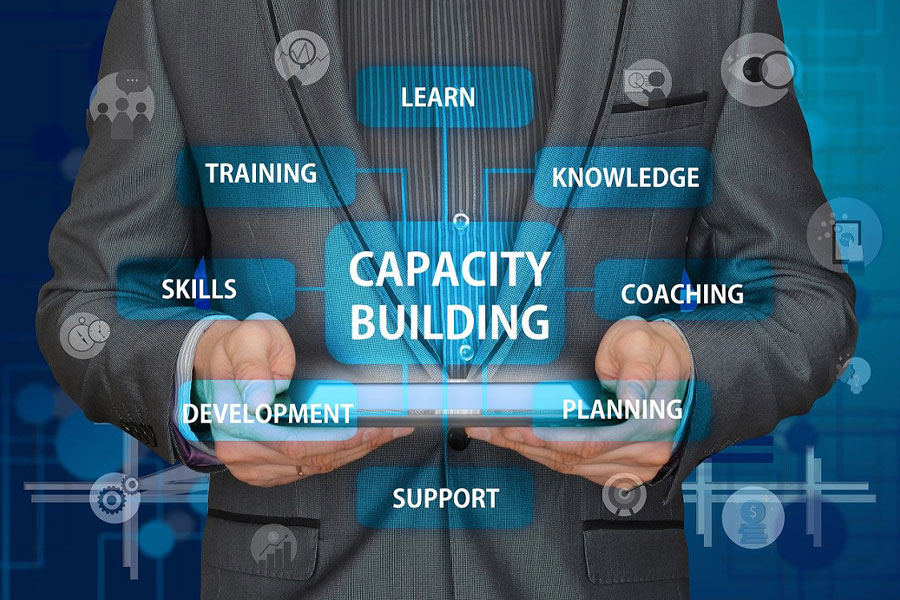Next-Gen Talent Acquisition Strategy: A New Approach

Talent strategy is quietly becoming one of the biggest differentiators in business performance, and most companies are still behind, trying to cope in.
They’re not just filling role. They’re building competitive advantage through talent. This isn’t about HR transformation. It’s about creating a next gen talent acquisition strategy that makes your workforce as agile as your technology, as intelligent as your data, and as forward-looking as your growth ambitions.
Why Market Shifts Demand a Fresh Approach
Today’s talent landscape is undergoing significant change. Automation, economic shifts, and evolving candidate expectations have redefined how organizations compete for top talent. The World Economic Forum and other research highlight that 44% of workers’ skills will be disrupted by 2027, and 61% of employees will require additional training within that timeframe. This rapid evolution of required skills contributes to the widening gap
Generation Z, in particular, values diversity, inclusion, transparency, and technology-driven experiences. Talent acquisition strategies must go beyond traditional methods to attract and retain them. Aligning with what matters to this generation is not just about hiring, it's about building long-term engagement.
Modern hiring also calls for greater flexibility. A next generation talent acquisition strategy enables access to diverse talent pools and provides local market insights that support smarter hiring decisions.
Organizations that evolve their hiring practices are better positioned to succeed. Those relying on outdated, transactional models risk falling behind in today’s competitive market.
What Is a Next Gen Talent Acquisition Strategy?
A next gen talent acquisition strategy is more than a hiring plan. It’s a business-critical framework that anticipates skills needs, aligns talent with future growth, and builds relationships long before a role opens up.
Unlike traditional recruiting, which reacts to openings, this strategy takes a proactive, intelligence-driven approach. Let’s say, a tech firm preparing to launch AI products wouldn’t wait until Q4 to start hiring engineers. With a future-focused strategy, they’d begin identifying required capabilities, targeting emerging talent hubs, partnering with universities, and establishing themselves as an employer of choice, always months in advance.
At its core, it includes:
-
AI-Augmented Sourcing & Screening:
Intelligent tools automate early-stage tasks, match candidates beyond keywords, and reduce bias.
-
Experience-Led Recruiting:
Every touchpoint, such as career sites, communication, and interviews, is tailored to create a frictionless and engaging experience.
-
Strategic Workforce Planning:
Hiring isn’t reactive. It’s tied to long-term business goals, skills forecasting, and market trends.
-
Diversity, Equity & Inclusion (DEI):
DEI is no longer a metric. It has become a mindset built into the hiring process from sourcing to selection.
-
Employer Brand as a Competitive Weapon:
The perception of your culture, purpose, and growth potential often determines whether candidates say yes, even before the first conversation.
-
Metrics that Matter:
Modern talent teams track quality of hire, offer acceptance rates, candidate NPS, and recruitment marketing ROI, and not just cost-per-hire or time-to-fill.
This is the basic and most highlighted difference between transactional hiring and a next-generation talent acquisition strategy.
Today’s candidates are watching how companies show up online, how leaders communicate, and how former employees rate the culture. That reputation influences who applies and who accepts.
Next-Gen Talent Acquisition Vs. Traditional Hiring
Let's understand this basic difference in a comparative chart:
| Legacy Hiring | Next-Gen Talent Acquisition |
|---|---|
| Reactive hiring | Predictive workforce planning |
| Manual processes | AI-powered sourcing and scheduling |
| Volume-driven | Quality, DEI, and experience-driven |
| Cost-per-hire focus | Business impact & retention focus |
| Generic job ads | Personalized EVP and micro-targeted messaging |
Success in modern hiring is no longer defined by speed alone. In a modern talent acquisition strategy, real KPIs include:
- Candidate satisfaction scores
- Quality of hire
- Retention after 6 or 12 months
- Offer-to-acceptance rates
- Cost per hire relative to impact
The bottom line? A next-gen talent acquisition strategy is about readiness. It equips organizations to hire with agility, scale with purpose, and lead with intention.
Why Traditional Hiring No Longer Works
Legacy models were designed for volume, not agility or personalization. Manual requisitions, generic job postings, and linear funnels no longer meet today’s demands.
Here’s what’s changed:
- Time-to-fill has become critical. 60-day hiring cycles are no longer sustainable.
- Top talent isn’t applying anymore. They’re being sourced.
- Candidates expect personalized experiences and faster feedback loops.
A next-gen talent acquisition strategy solves for these gaps by rethinking how talent is found, engaged, and hired.
Does AI Replace Humans in Hiring?
Artificial intelligence doesn’t replace recruiters, rather, it supercharges them. It’s a key part of the next-gen TA strategy, empowering teams to work smarter.
Use cases include:
- Predictive analytics to forecast hiring needs and attrition risks
- NLP to remove bias from resume reviews
- Conversational AI to engage candidates at scale without sacrificing warmth
- Programmatic job ads that optimize spend in real time
The goal is to insert AI where it makes the biggest impact and not just to be efficient, but to be effective.
How to Build a Next-Gen Talent Acquisition Strategy
If you're ready to move beyond business-as-usual hiring, here’s your blueprint:
1. Audit Your Current Hiring Landscape
Where are the drop-offs? What does your candidate feedback say? Are sourcing efforts aligned with future needs?
2. Redefine Success Metrics
Shift from transactional KPIs to strategic metrics. Focus on:
- Time-to-productivity
- Diversity penetration
- Long-term retention
3. Invest in Integrated Tech
Your ATS, CRM, scheduling, sourcing, and analytics tools should all talk to each other. Visibility drives better decisions.
4. Build Talent Intelligence
Use real-time data and external insights to guide decisions. This is the engine of your future-forward talent acquisition strategy.
5. Train Recruiters as Advisors
Level up your hiring teams. They should shape hiring plans, challenge hiring manager assumptions, and lead strategic conversations.
Let’s understand this Next-Gen TA Strategy with a simple example:
A US-based FinTech firm faced long hiring cycles and high attrition. They partnered with an RPO provider and implemented a next-gen talent acquisition strategy that included:
- AI-driven sourcing and shortlisting
- Inclusive job descriptions backed by DEI insights
- Automated scheduling and onboarding
- A niche employer branding campaign
In 6 months:
- Time-to-fill dropped by 45%
- First-year attrition fell by 32%
- Offer acceptance rose to 89%
- Diverse hires in tech roles increased by 21%
Strategic hiring, powered by the right tools, delivered real outcomes.
Final Thoughts
The best next-gen talent acquisition strategies aren’t static. They evolve with your business and your people. That means:
- Running regular audits on tools and processes
- Upskilling recruiters continuously
- Prioritizing candidate experience and inclusion
Talent acquisition has moved from the sidelines to the center of business success. Companies investing in a next-gen talent acquisition strategy will build the teams that drive innovation, resilience, and growth.
Are you hiring for today, or for what comes next?
At AMS, we help organizations reimagine hiring with flexible, modular solutions, AI-powered tools, and inclusive best practices. We make it easier to scale fast, hire smart, and build the future. Contact us today.







